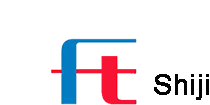Most modern papermaking machines are based on the principles of the Fourdrinier Machine (长网纸机), which uses a specially woven plastic fabric mesh conveyor belt (known as a wire as it was once woven from bronze) in the forming section (成形部), where a slurry of fiber (usually wood or other vegetable fibers) is drained to create a continuous paper web.
After the forming section the wet web passes through a press section (压榨部)to squeeze out excess water, then the pressed web passes through a heated drying section (干燥部).
The original fourdrinier forming section used a horizontal drainage area, referred to as the drainage table.
Paper machines have four distinct operational sections:
Forming section, commonly called the wet end(湿部), is where the slurry of fibres is filtered out on a continuous fabric loop to form a wet web of fibre.
Press section where the wet fiber web passes between large rolls loaded under high pressure to squeeze out (挤出,脱除) as much water as possible.
Drying section, where the pressed sheet passes partly around, in a serpentine manner, a series of steam heated drying cylinders. Drying removes the water content down to a level of about 6%, where it will remain at typical indoor atmospheric conditions.
Calendersection where heavy steel rolls smooth the dried paper. Only one nip is necessary in order to hold the sheet, which shrinks through the drying section and is held in tension between the press section (or breaker stack if used) and the calender. Extra nips give more smoothing but at some expense to paper strength.
Paper machines are long-lived assets(设备,部件)that usually remain in service for several decades. It is common to rebuild machines (纸机改造) periodically to increase production and improve quality or to change the type of paper grade.
Factory
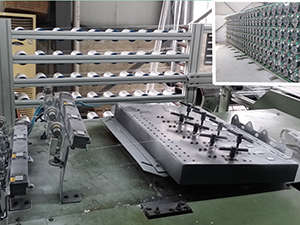 |
 |
 |
|
Warping machine |
Import weaving machine |
Import weaving machine |
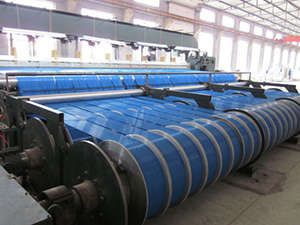 |
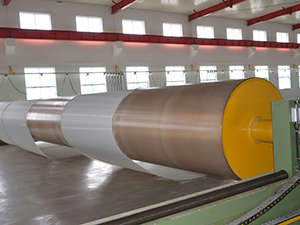 |
 |
|
Weaving machine |
12 meters wide heat treatment machine |
Heat treatment |
 |
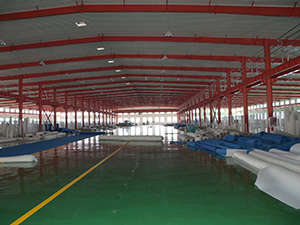 |
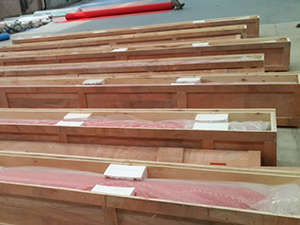 |
|
Joining machine |
Workshop |
Package |
